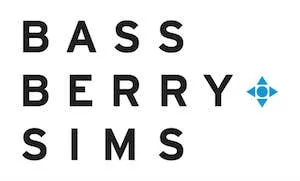- with readers working within the Technology and Construction & Engineering industries
- within Coronavirus (COVID-19) topic(s)
On August 15, the White House Office of Management and Budget's (OMB) Office of Federal Procurement Policy (OFPP) announced agencies may "immediately begin eliminating one-third of requirements from their future contracts that are not required by statute or executive orders and have little to do with contract outcomes."
This regulatory rollback, paired with simplified purchasing procedures, is expected to help agencies more readily adopt commercially available solutions, including innovations from small businesses by immediately implementing the revised Federal Acquisition Regulation (FAR) sections that have already been revised in the ongoing "Revolutionary FAR Overhaul."
Additional changes announced include the elimination of "outdated requirements" such as paper-based price lists and duplicative contract approvals, as well as the consolidation of procedures into a modernized FAR Part 8, Required Sources of Supplies and Services. FAR Parts 38, Federal Supply Schedule Contracting, and Part 51, Use of Government Sources by Contractors, have been officially retired, with information technology and supply chain security policies consolidated into a single section for easier access. OFPP has also promised improvements to the System for Award Management (SAM) to simplify contractor registration and maintenance, making it easier for businesses to engage with the federal marketplace.
Another major component of the reforms is a push toward consolidated government-wide contracting. Agencies are being directed to make greater use of "best-in-class" and "preferred" contracts for common commercial products and services, rather than maintaining duplicative agency-specific contracts. OFPP will establish new criteria for best-in-class contracts, which agencies will be required to use whenever appropriate, with preferred contracts as the next best option.
FAR Overhaul Background
This announcement follows President Trump's April Executive Order directing the OFPP to amend the FAR so that it contains only those "provisions that are required by statute or that are otherwise necessary to support simplicity and usability, strengthen the efficacy of the procurement system, or protect economic or national security interests." Under the order, the FAR Council and agency heads have until October 13, 2025, to implement conforming amendments.
Over the past several months, the FAR has already undergone major revisions, with 23 Parts "overhauled" in order to create "the most agile, effective, and efficient procurement system possible." The reform process is unfolding in two phases. First, the FAR Council issues model deviation text for each FAR Part, and agencies can then implement those revised parts through their own class deviations within 30 days. These deviations, while often uniform in substance, are issued agency by agency, Part by Part, all on different dates. In accordance with FAR Subpart 1.4, these "class deviations" are authorized to address an agency's specific needs prior to formal notice-and-comment regulatory action. This authority, which is being used by most federal agencies to immediately implement the FAR rewrite, has previously been used by agencies to implement executive orders such as the government contractor COVID-19 vaccination mandate.
After the issuance of all revised FAR Parts, the FAR Council will move into the traditional notice and comment rulemaking process to formalize the changes.
The policy shift reflects a broader emphasis on streamlined procurement. As Dr. Kevin Rhodes, senior advisor to OMB Director Russell Vought explained, "the old rules were built for paperwork; the new rules are built for performance. With each deviation, we're clearing out red tape and making space for better value, timely delivery, and more robust competition. This will open the door for increased participation by innovative small business manufacturers, new entrants, and others who have not traditionally been willing or able to work with our agencies."
To support the acquisition workforce through these changes, OFPP and the FAR Council are releasing a series of non-regulatory resources: FAR Companion Guide, Practitioner's Albums, and Category Guide.
- The FAR Companion Guide provides strategic "how to" tips and other insights from experienced practitioners across the government on using the new streamlined FAR.
- The Practitioner's Albums provide tested learning tools to accelerate the adoption of innovative practices for getting better contract outcomes.
- The Category Guide includes practical advice from category managers for getting the most out of best-in-class and other preferred government-wide contracts. These tools will enable the federal government's acquisition workforce to quickly understand and implement the streamlined FAR.
The FAR Companion Guide and the Category Guide have yet to be released, but each "overhauled" FAR Part contains a Practitioner's Album, such as Part 18's here. In addition to regulatory reform, the overhaul includes the development of "buying guides," which are practical, category-specific resources that help agencies make better purchasing decisions in areas like technology, infrastructure, and national defense. The first guide will focus on Software as a Service (SaaS). The streamlined FAR and these non-regulatory resources will collectively form the Strategic Acquisition Guidance (SAG).
Contractor Considerations
Because revisions are being introduced through class deviations before completion of the formal rulemaking process, requirements will vary by agency in the near term. Contractors should carefully review solicitation language and agency-specific deviations. Additional changes are expected throughout the remainder of 2025 as more FAR Parts are revised and agencies continue aligning their internal procedures with OFPP's direction.
Taken together, these reforms represent a substantial policy shift with broad implications for the contracting community. By eliminating outdated requirements, centralizing procurement through government-wide vehicles, and simplifying registration and compliance processes, OFPP is seeking to lower barriers to entry and broaden participation in the federal marketplace.
For many small businesses, however, these changes will require careful adjustment. Firms that have traditionally relied on agency-specific contracts may now need to reorient their strategies toward competing on government-wide "best-in-class" vehicles or partnering with larger contractors that hold them. Similarly, businesses will need to invest in understanding the new SAG framework, including the "buying guides," to ensure offers align with evolving federal priorities.
While the reforms are designed to enhance competition and efficiency, they may also reshape the federal procurement landscape by rewarding businesses that can adapt quickly to the new model. Small and mid-sized contractors, in particular, may find both new opportunities and new challenges as they adjust their strategic plans.
The content of this article is intended to provide a general guide to the subject matter. Specialist advice should be sought about your specific circumstances.


